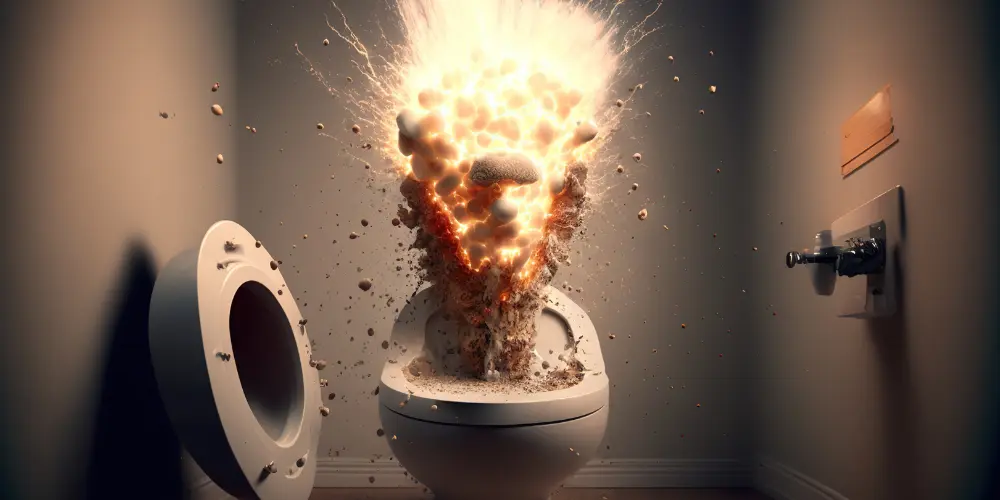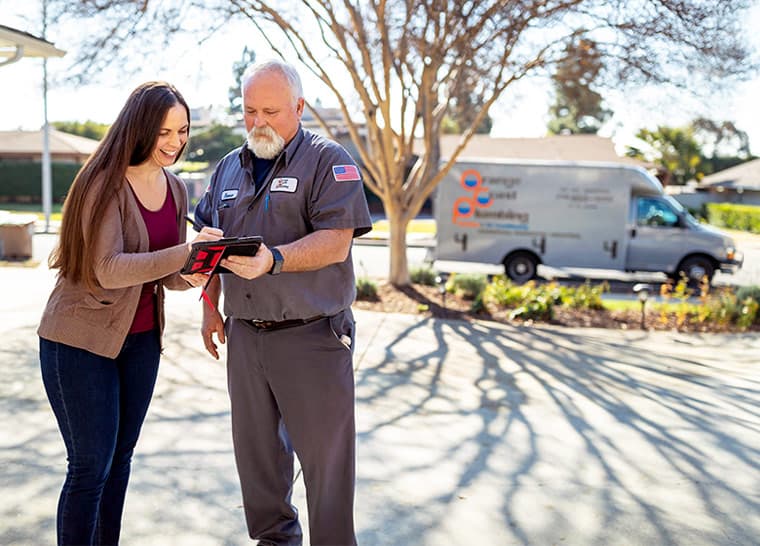Backflow prevention may not be first and foremost in your mind, but it’s crucial for the safety of your home and family.
Imagine the horror of a toilet exploding or contaminated water flowing back into your clean water supply. It’s a definite damper on your quality of life and a recipe for health calamities.
That said, there are ways to mitigate backflow risks, which we’ll investigate in this blog.
Understanding Backflow
What is Backflow?
Backflow is a plumbing aberration where water reverses direction from its intended flow. This leads to the potential contamination of clean water with pollutants and sewage. It can happen in residential, commercial, or industrial plumbing systems and is usually caused by pressure changes in drain pipes and sewer lines.
The two types of backflow are:
- Backpressure, which occurs when downstream pressure exceeds the supply pressure.
- Back-siphonage, where there’s a drop in supply line water pressure.
Common Reasons for Backflow
- Burst Pipes: Extreme conditions, like earthquakes or freezing temperatures, can burst pipes and create a pressure imbalance.
- Faulty Cross-Connections: Improper connections between potable and non-potable water sources can facilitate the unwanted flow of contaminants into drinking water.
- Heavy Rainfall: Sudden and intense rain can overwhelm drainage systems, increasing pressure and potential backflow.
- High Demand: Water-intensive activities like firefighting can disrupt normal water pressure.
- Agricultural Runoff: Pesticides and fertilizers from agriculture can seep into the water supply through backflow, particularly during heavy rains.
Dangers of Backflow
- Health Hazards: Water tainted by bacteria, chemicals, and sewage can cause illnesses ranging from gastrointestinal problems to more severe conditions.
- Property Damage: Backflow can damage your belongings and compromise the structural integrity of your home. The cost of repairs and replacements can be substantial.
- Environmental Impact: Backflow can pollute natural water bodies, harming wildlife and disrupting ecosystems. This affects biodiversity and compromises the quality of recreational water bodies and drinking water downstream.
- Legal and Financial Consequences: Homeowners and businesses may face fines, legal action, and higher insurance premiums if they fail to adhere to regulations for backflow prevention.
Signs of a Backflow
Identifying a backflow issue as soon as possible is crucial for the health and safety of your home’s water supply. Symptoms of a problem include:
- Noticeable Changes in Water Pressure: A drop or spike in water pressure can indicate backflow issues.
- Unusual Noises in Your Plumbing System: Banging, gurgling, or whistling sounds from pipes can signal that water is flowing in the wrong direction.
- Frequent Water Quality Issues: Sediment, debris, or foul odors in your water supply could be due to backflow.
- Recurring Plumbing Problems: These include frequent clogs, backups, or leaks in your plumbing system.
- Unexpectedly High Water Bills: If there’s no obvious cause for an unexplained increase in your water bill, you could have a backflow issue or leak. Either way, it’s time for professional intervention.
Types of Backflow Prevention Devices
Most California cities mandate the installation of backflow prevention devices for residential and commercial properties. But despite these regulations, some homes and businesses with aging plumbing systems lack adequate backflow prevention measures.
Well-maintained backflow prevention devices are the first line of defense against backflow. The type of device installed depends on your plumbing system and the level of protection needed.
These devices include:
- Air Gaps: Often found in sink faucets and connected to drain pipes, it’s a physical separation between the water outlet and the flood level of a fixture.
- Reduced Pressure Zone (RPZ) Valves: Mechanical devices that prevent backflow by using a double-check valve system. They’re best suited for high-risk properties, like those with boilers or fire sprinkler systems.
- Pressure Vacuum Breaker (PVB) Assemblies: These use air to break the siphon and prevent backflow. They’re common in residential properties.
- Double Check Valve (DCV) Assemblies: A DCV assembly has two check valves that stop the reverse flow of water, making it a reliable choice for low-risk situations.
- Atmospheric Vacuum Breakers (AVB): Installed on individual fixtures, AVBs create a physical gap in the plumbing system to prevent backflow.
Backflow Prevention Tips
- Schedule annual inspections with a certified professional to ensure your backflow prevention devices function correctly.
- Have a qualified and licensed plumber install any backflow prevention device.
- If you live in an older property, evaluate your plumbing system for potential upgrades. Modern systems offer better protection against backflow.
- Follow proper maintenance procedures for your plumbing system, such as regularly flushing out pipes and checking for leaks.
- After any significant plumbing repair or installing a new backflow prevention device, have a professional test the system.
- In colder climates, protect outdoor backflow prevention devices with insulated covers to prevent freezing and cracking.
DIY Backflow Prevention Techniques
Not all backflow prevention measures require professional installation. Homeowners can take additional steps to mitigate the risk of backflow incidents:
- Install Hose Bib Vacuum Breakers: These devices attach to outdoor faucets or hoses to prevent contaminated water from flowing back into your home’s plumbing.
- Avoid Submerging Hoses in Containers with Chemicals or Pollutants: Always keep the end of the hose above the water line when filling containers. This simple practice prevents contaminated water from being siphoned back into your clean water supply.
- Regularly Clean Your Plumbing Fixtures: Keep your indoor and outdoor plumbing fixtures clean and in good working order. Replace worn-out parts and fix leaks promptly.
- Reduce Your Water Use During Rainstorms: Heavy rains can overwhelm municipal sewer systems, increasing the likelihood of backflow.
- Properly Dispose of Hazardous Materials: Never pour chemicals, oils, or other hazardous substances down the drain. These can contaminate your water supply.
When to Consult a Professional Plumber
Call a plumber immediately if you experience backflow symptoms or have concerns about your property’s water supply.
Orange Coast Plumbing’s licensed and certified plumbers have many years of experience in all aspects of backflow prevention, including inspections, installations, and maintenance. We’re available for plumbing emergencies 24-7, even on holidays.
If you live in Orange County, Long Beach, or Los Angeles and suspect a plumbing problem in your home or business, please call us today to schedule an appointment.
FAQ: Preventing Backflow
Q: How often should backflow prevention devices be tested?
A: They should be tested annually by a certified professional plumber to ensure they’re functioning correctly.
Q: Are backflow prevention devices required for residential properties?
A: Yes, in California. In most other areas as well, backflow devices are required by law, especially for homes with irrigation systems or private wells.
Q: Can I install a backflow prevention device myself?
A: While homeowners can install some devices, we recommend hiring a professional plumber for proper installation and maintenance.
Q: How can I tell if my home is at risk of backflow?
A: Homes in areas prone to flooding or with outdated plumbing systems are at higher risk of backflow and should take preventive measures.
Q: What should I do if I suspect a backflow issue?
A: Contact a licensed plumber immediately to assess the situation and recommend appropriate measures.
Q: Will installing a backflow prevention device affect my water pressure?
A: In most cases, the effect on water pressure is minimal and not noticeable. However, some backflow prevention devices, particularly RPZ valves, may slightly reduce water pressure. If this is a concern, discuss your options with a professional plumber.
Q: Is there a difference between residential and commercial backflow prevention?
A: Commercial properties often require more complex backflow prevention systems than residential homes. Properties with specific hazards, like chemical plants, need specialized devices to manage risks.
Q: How long do backflow prevention devices last?
A: Most backflow prevention devices can last many years with proper maintenance. However, components may need to be replaced or repaired to ensure the device functions correctly.
Q: Can I test my backflow prevention device myself?
A: While some homeowners can perform basic checks, a certified professional should do formal testing. This ensures accurate results and compliance with local regulations.
Q: What happens if a backflow prevention device fails a test?
A: You’ll need to repair or replace it. Your plumber can help you figure out the best course of action.


